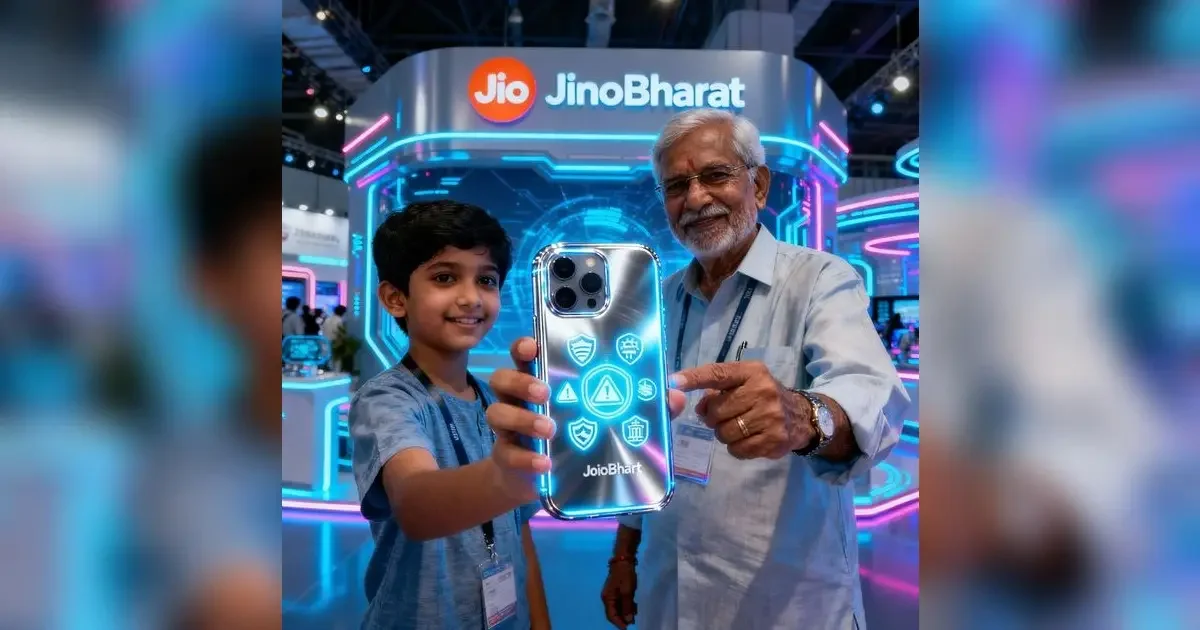Jio launches “JioBharat” phones with a safety-first twist
India doesn’t need another cheap phone. India needs a cheap phone that actually keeps people safe. That’s the pitch Reliance Jio took to India Mobile Congress (IMC) 2025 with its new JioBharat lineup built around “Safety-First” features.
Multiple outlets covering the launch say the phones focus on location sharing, call/message controls, SOS, and long battery life, with Jio positioning them for kids, seniors, and anyone who just wants a dependable basic phone. Some reports peg the starting price around ₹799 and mention up to 7-day backup, though Jio hasn’t published a full spec sheet yet. So treat the exact price and hardware details as “likely”, not final.
What “Safety-First” actually means
From what’s been shared on stage and in press briefings:
· Location tracking & share: Trusted contacts can see where the phone is or request a location ping during emergencies. Useful for school commutes or elderly parents living alone.
· Usage Manager (who can reach you): Guardians can whitelist callers and block unknown numbers, effectively cutting out spam and late-night nuisance calls. For a basic phone, that’s a big deal.
· SOS / Safety button: One-press alerts to preset contacts with location, aimed at fast escalation without fiddling through menus.
· Battery that lasts: Reports mention up to a week on a single charge—exact capacity wasn’t disclosed, but longevity is clearly a priority.
· Target users: Jio explicitly calls out children, women, and seniors—three groups that benefit most from simple controls and reliable connectivity.
Why this matters (beyond specs)
Let’s be honest: for crores of Indian families, the “second phone” is a lifeline, not a status symbol. A low-cost device with guardrails solves three everyday problems:
1. Peace of mind for parents: Know where your kid is, decide who can call them, and get an SOS if something feels off. That’s clarity, not control.
2. Dignity for seniors: A phone that doesn’t drown them in spam, lasts days, and can summon help without navigating a maze of apps.
3. Coverage for the underserved: If this truly lands around the ₹800 mark (subject to official confirmation), it undercuts many “feature phones” while adding safety features you usually only see in smartphones.
Okay, but what’s missing?
· Official spec sheet: We don’t have chip, RAM, display size, or full band support. Jio has kept that quiet (for now).
· Exact pricing across variants: Several reports say ₹799 and talk about early booking tokens (₹100), but we’ll wait for Jio’s own page or brochure to lock it in.
· Service tie-ins: Expect Jio to bundle calling/data packs optimised for these phones, but specifics weren’t detailed.
Who should consider it?
· Parents of first-time phone users: If your Class 6–9 kid is nagging for a smartphone, this is a sane halfway house.
· Families with elderly members: SOS + call controls + long battery is a practical combo.
· Anyone in patchy-power or rural zones: Week-long standby matters when charging isn’t guaranteed.
The bottom line
Jio isn’t just selling a phone; it’s selling a policy—that basic connectivity should be safe by default. If the final price/specs hold anywhere near what’s been reported, JioBharat could quietly become India’s default “safety phone.” As always, wait for the official spec sheet and pricing before you hit “Buy,” but the intent here is strong—and overdue.
